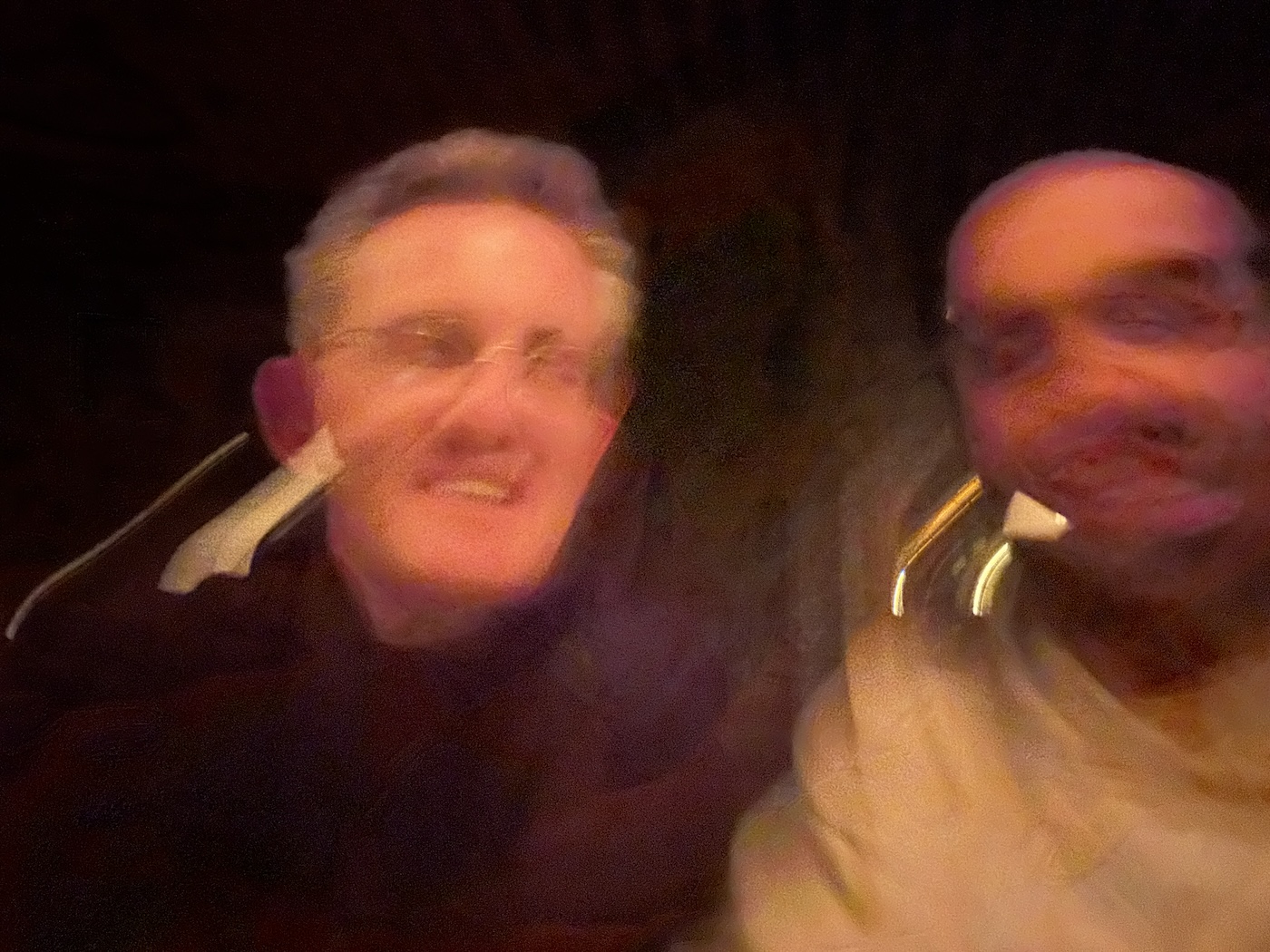
Ebbing and/or flowing, I’m not quite sure which, with my friend Neil Pasricha
(I just love the ‘vibe’ of this photo 🙂)
My rhythm method
As a young consultant, I remember coming across someone describing the *real* experience of change.
This brave executive said something like this:
“We pick a target.
We run like hell towards towards it.
Then we stop and figure out where we are.
And then we go again.”
I didn’t know much then, but I knew that this felt like truth.
It felt like life.
A potted history of project management
That’s not how people tell you that change works.
Perhaps you’re familiar with Gantt charts. They look a little bit like a sideways view of stairs.
They map a well-behaved project.
First, this task in this assigned time. That …
… then steps down to the next task, also with an allotted time.
This is not truth. This is not life.
Gantt charts are a delusional act of fiction. (This makes my point, nicely.)
Something called agile mostly replaced Gantt charts, which does a better job of dealing with reality.
My favourite variation on agile comes from the people at Basecamp, a software company founded by Jason Fried (author of the usefully provocative, Rework.)
Basecamp is well known for being consistently profitable, being very focused on solving problems for its customers, and being restless about finding the best ways to work.
Their book Shape Up (ebook at no cost here) explained the rhythm of their work. Here’s my simplified version:
Figure out your best guess of what to work on.
Six weeks on.
Two weeks off.
Repeat.
Six weeks to work hard on an agreed project. Two weeks to stop, step back, depressurize, reset, reassess, and start figuring out what the next six week focus would be.
In six weeks, you can make a LOT of great progress.
And if your six weeks turn out to be not successful, as happens predictably enough every now and then, well, it’s only six weeks. You have five more six-week cycles in a year.
Two weeks in between each, because you need to surface, see the bigger picture, check whether the hole you’re digging is still a good hole, and get ready for the next push.
You can’t grind all the time
Working out, taking a break.
Breathing in, breathing out.
Volume up, volume down.
Life is best when there are moments of intensity, and there are moments of stepping away.
Six weeks on, two weeks off is the rhythm we use in The Conspiracy, our community where people make on-going progress on the projects that matter to them.
If you’d like support to use this rhythm to do some of the best work of your life, doors open on Friday for one week only.
Join The Conspiracy membership community for our May onboarding.
Want The Works in your inbox? Sign up (free) here




